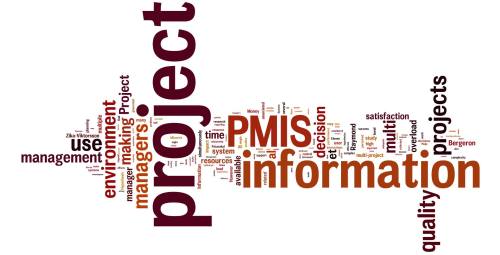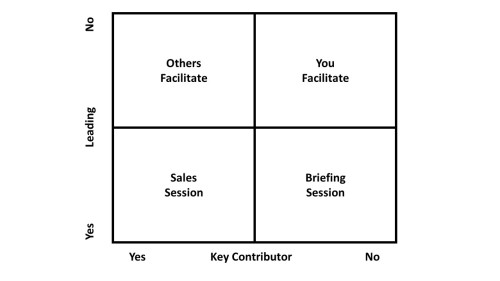Everyone likes a successful project but the big question is what makes a project successful?? A good example is the Sydney Opera House; was the Sydney Opera House successful or not?
The project ran significantly over budget finished very late and was technically less than perfect; $millions are currently being spent rectifying many of the technical deficiencies in the building. But can anyone say Sydney Opera House is not one of the most recognised and therefore successful buildings in the world?[1]
Success is an ephemeral concept! Different people will have different perspectives and judge the success or failure project differently. Neither a project nor a program manager can control many of the factors that have made the Sydney Opera House worldwide icon but they can address the concept of success with their stakeholders and then work to deliver a successful outcome based on these discussions.
So what is success? There are probably three key elements, but these frequently create a paradox that requires a balanced approach to success. The three fundamental elements are:
- The Iron Triangle (Scope + Cost + Time)
- Benefits realised (or maximised)
- Satisfied stakeholders (but, when??)
One of the key paradox is a myopic focus on the Iron Triangle particularly time and cost can frequently destroy benefits and leave the stakeholders unhappy, but focusing on keeping stakeholders happy can frequently have detrimental effects on the Iron Triangle. There are no easy solutions to this problem[2].
In my view, the successful delivery of a project or program requires:
- Achieving the overall goal for the project;
- Delivering its objectives; and
- Meeting its success criteria.
But, to achieve success you need to define and agree the project goal, the project objectives, and the project success criteria with your key stakeholders with a view to achieving a combination of stakeholder satisfaction and value created. The goal and objectives frame the project’s work and direction. The success criteria frame how the objectives are achieved.
The Project Goal
Goals are high-level statements that provide the overall context defining what the project is trying to achieve. One project should have one goal (if there are multiple goals you are most likely looking at a program of work[3])! For example: Within 180 days, reduce the pollution in the rainwater runoff from a council tip by 98%.
The goal is a key statement in the Project Charter[4] and if the project is to be successful, all key stakeholders need to agree the goal. The goal needs to be specific and should define the project in a way that focuses attention on the key outcomes required for overall success from a technical and strategic business perspective[5].
Project Objectives
The objectives are lower level statements that describe the specific, tangible products and deliverables that the project will create; each objective (and the overall goal) should be SMART[6]. For the runoff project the objectives may include:
- Develop wetlands to trap 99.8% of sediment
- Install channels to collect and direct the runoff
- Install screens remove floating debris
- Etc….. There will be a number of objectives……
Each objective requires defining and specifying with clear performance criteria so you know when it has been achieved. This may be done by the client or by the project team during the scope definition process. The performance criteria may be defined by a set of precise specifications that are specific and measurable or may be defined as a performance requirement with either:
- The external contractor to provide the specific details of how the objective will be achieved, or
- The internal project team to develop the details in consultation with the client
The defined objectives are the building blocks that facilitate the achievement of the goal and the creation of the benefits the organisation is expecting from the project[7]. The benefits need to be realised to create value.
Success criteria
Success criteria are different they measure what’s important to your stakeholders. Consequently, they are the standards by which the project will be judged at the end to decide whether or not it has been successful in the eyes of its stakeholders. As far as possible the stakeholders need to be satisfied; this includes having their expectations fulfilled and in general terms being pleased with both the journey and the outcome (in this respect scope, cost and/or time may be important).
Success criteria can be expressed in many different ways some examples include:
- Zero accidents / no environmental issues;
- No ‘bad press’ / good publicity received;
- Finalist in the project achievement awards;
- Plus the goal and all of the objectives achieved (yes – you still need to do the work).
For any project, the success criteria should be split between project management success criteria which of related to the professional aspects of running the project; plus project deliverable success criteria which are related to the performance and function of the deliverable.
Documenting the success criteria is important, it means you can get project stakeholders to sign up to them, and having them clearly recorded removes ambiguity about what you are setting out to do. The four basic steps to create useful success criteria are
- Document and agree the criteria; each criteria should include:
- The name of success criteria,
- How it is going to be measured,
- How often it is going to be measured, and
- Who is responsible for the measurement.
- Use continuous measurements where possible. For example, rather than ‘finish the project on time’ measure progress continually ‘no activity completes more than 5 days after its late finish date’.
- Baseline today’s performance.
- Track and report on your progress.
As with any performance indicators, the art is to select a few key measures that represent the wider picture if there are too many success criteria defined the impact will be severely reduced. For example, the effectiveness of meetings, communication and stakeholder attitude could be measured scientifically using the ‘Index Value’ in the Stakeholder Circle[8] or pragmatically by measuring the number of open issues against a target (eg, no more than 5 high priority open issues).
Summary
Goals and objectives are the building blocks required to allow the realisation value from the project’s outputs; they are essential ingredients in a successful project but are insufficient on their own. The role of success criteria is to direct the way work at the project is accomplished so as to meet stakeholder expectations, and to craft a perception of success in the stakeholder’s minds.
Project success is an amalgam of value created for the organisation and your stakeholders being satisfied with the journey and the outcome. This concept of success may seem subjective, but it does not have to be. Successful organisations work to take the guesswork out of this process by defining what success looks like and agreeing these definitions with the key stakeholders, so they all know when the project has achieved it.
This means the key to stakeholders perceiving your project as successful lays in understanding the criteria they will measure success by, incorporating those measures into your project success criteria, and then working to achieve the criteria. But even this is not enough, to engage your stakeholders you need to communicate the criteria, communicate your progress and communicate your success at the end. For more on effective communication see: http://www.mosaicprojects.com.au/PM-Knowledge_Index.html#PPM07
________________
[1] For more on the success or failure of the Sydney Opera House see Avoiding the Successful Failure!: http://www.mosaicprojects.com.au/Resources_Papers_046.html
[2] For more on paradox see: https://www.projectmanagement.com/blog-post/30669/The-Problem-With-Paradox
[3] For more on differentiating projects and programs see: http://www.mosaicprojects.com.au/WhitePapers/WP1002_Programs.pdf
[4] For more on the project charter see: http://www.mosaicprojects.com.au/WhitePapers/WP1019_Charter.pdf
[5] For more on project success see: http://www.mosaicprojects.com.au/Mag_Articles/N001_Achieving_Real_Project_Success.pdf
[6] SMART = Specific, Measurable, Attainable, Relevant and Time-framed.
[7] For more on linking objectives and benefits see: http://www.mosaicprojects.com.au/WhitePapers/WP1042_Outputs_Outcomes_Benefits.pdf
[8] The Stakeholder Circle® index value see: http://202.146.213.160/help-files/stakeholder-engagement-profile/#engagement-index



















 I would suggest discussing what you don’t know about the consequences of climate change on your organisation is a serious conversation that needs to be started within your team and your wider stakeholder community.
I would suggest discussing what you don’t know about the consequences of climate change on your organisation is a serious conversation that needs to be started within your team and your wider stakeholder community.